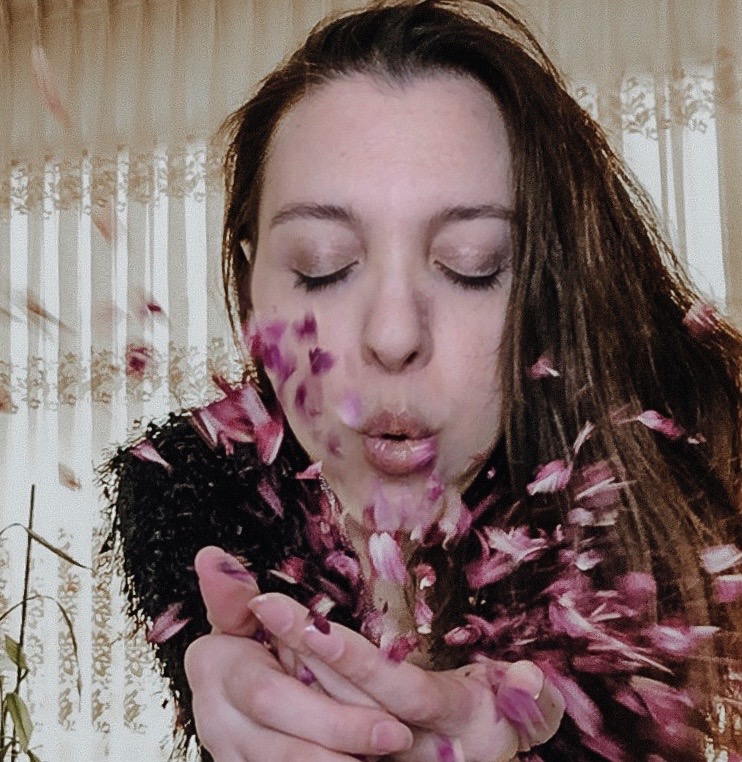When my hand problems started to emerge in 2012, the body positivity movement was ironically spreading the message across social media that all bodies are beautiful. Before I was diagnosed with juvenile idiopathic arthritis a few years earlier, I never really had any negative emotions toward my body as a whole — or any individual parts of it. I was all about supporting the body positivity movement, but I never connected to it personally.
Invisible vs. Visible Disabilities
A disease like inflammatory arthritis is often said to cause “invisible” disabilities, because people can’t see the pain, stiffness, and fatigue we struggle with. But it doesn’t always stay invisible.
By the time I was 26, my disease was no longer something I could hide. My right hand showed signs of is known as an ulnar drift. This is a hand deformity in which the swelling of the first two big knuckle joints (known as the metacarpophalangeal joints) causes the fingers to be displaced towards the little finger.
There were visible signs of swelling in the first two knuckle joints on my left hand, though I do not have an ulnar drift here. My left hand had something different occurring on my ring and pinky fingers called a boutonniere deformity. This resulted from tendon and ligament damage, forcing the middle part of those two fingers to be bent in position and no longer be able to straighten.
I also began to experience weight fluctuations because of medications I was taking to treat my condition and from the disease itself. I started to empathize more with what this body positivity movement stood for, but at the same time, I felt that movements like this and similar ones (such as My Scars Are Beautiful) addressed only part of my experience.
There was nothing out there that spoke to what I was struggling with the most: the visible deformities from my chronic illness. All bodies and scars were beautiful, but where did my challenge fit in? What if I didn’t see my hands as beautiful? How could I love a part of my body that was ravaged by a disease that was attacking my body against my own will, despite my best efforts to control it?
The Friction Between My Past and Present Hand Disabilities
Autoimmune and chronic disease advocates (including me) work tirelessly to raise awareness that invisible illnesses are real. That just because we “don’t look sick” doesn’t mean we are not sick. But when I found myself moving away from the invisible illness and disability side into the more visible one, I started to grieve even more.
I began to miss the way my hands used to look when there were no visible deformities. I wished I could go back to having my hands look “normal,” even if that meant having more pain and inflammation. It felt easier to cope with my disease when I didn’t have to see visible signs of it every day. It became hard to forget about my changing hands when I was reminded about them at every doctor’s appointment and in well-meaning conversation with friends, family, and potential love interests. It became even harder when daily tasks such as opening a bottle of water, sending a simple text message, or making my own bed became at times too painful to do.
Just when I felt that I had finally entered a stage of happiness, peace, and acceptance of my chronic disease, I was thrusted back into stage one again — denial.
Denial led me to avoid looking in mirrors, for fear that I would see how ugly my hands turned out to be. Grief stopped me from painting my nails. Anxiety stopped me from going to nail salons out of fear that the nail technician would pull too hard on a part of my hand that is damaged and painful, or someone sitting next to me would look over and wonder or ask about what was wrong.
Going out to social events became a burden as I tried to think of creative ways to cover them up, even if that meant wearing a jacket in 90-degree weather. Rings, bracelets, and watches became a distant memory, as accessorizing would draw way too much attention.
Before my hand deformities became visible, I spent years fighting for society to see my illness was real. But I quickly learned that visible disability and deformities were not talked about enough, even though inflammatory arthritis has ravaged people’s hands for decades. This is becoming less common now that the disease can be treated with advanced medications like biologics, but I’m not one of the lucky ones. I found myself Googling images of how arthritis affects the hands, which made my anxiety even worse and started sparking negative thought patterns and opinions that are usually not true.
Uncovering My Limiting Beliefs
This was a random, simple exercise I found online, which shined a light on how my anxieties spiraled into fears and then self-made conclusions, which were just downright false. A lot of my limiting beliefs started with the words I can’t.
I can’t wear a sleeveless dress because I am embarrassed of my hands.
I can’t succeed in my goal to write a young adult romance novel because my hands have too much irreversible joint damage to type away at the computer.
I can’t date because no one will understand or be turned off.
I can’t be sexy because of my visible disability.
I can’t get engaged because I am not able to wear a ring on my finger.
I realized I could chip away at this anxiety and fear by proving these conclusions wrong. If I didn’t believe in my abilities, dreams, and ultimately myself, then who would? How would I be ready to receive what could be waiting for me if I already had my mind made up about how my life would be? My fears became challenges to overcome, not roadblocks to succumb to.
Finding Peace Out of My Comfort Zone
One of those personal challenges involves having my hand deformities visible in photos. I always tried to avoid this as much as possible.
I would try to find ways to pose in photos in a way that would cover my hands, such as by holding my clutch purse or a jacket, tucking my hand into a jeans pocket, or positioning myself in a group picture so I could tuck my hands behind others. The idea that my hands would be forever visible in a photograph for others to see — and for me to remember — made me uncomfortable.
I realized that in order to keep healing and moving forward I had to step out of my comfort zone and stop hiding my hands. Instead, I had to embrace how my arthritis has changed my hands.
What keeps me going is knowing I am finding my why. There are many reasons why I do the things I do. One of them is to help and connect with others. I knew I wanted to do something profound to bring more visibility to those of us living with visible disabilities and deformities.
#MyHandsAreLoveable: Embracing the Visible




I came up with the hashtag #MyHandsAreLoveable because I wanted to put my hands out there, to show the world how they’ve changed and what they’ve been through — and I hoped to help others in the process.
It all clicked when I recently came across Ryan J. Allen, a Scotland-based photographer who has psoriatic arthritis and started doing virtual photoshoots last year during the pandemic. I just knew I had to contact him for a session specifically for this passion project.
When I asked Ryan about his why for doing what he does, he said, “to stay creative, meet incredible people from around the world, and to bring some joy to someone’s day during this pandemic, allowing people to do something they would never have done before from the comfort of their own home.”
It was refreshing to connect with someone in another part of the world who gets what it’s like to live with an invisible and visible illness. Working on the photoshoot and the #MyHandsAreLoveable campaign has helped me to keep moving forward and stop caring about what other people may think about how I look.
I want others to feel comforted by this and inspired to share their own photos with the hashtag.
It’s body positivity for those with deformities and disabilities. It’s everything I’ve been working on to accept that my hands are lovable to me and those who love me. I continue to make a conscious effort to infuse love into my hands every day, even on the days I don’t want to.
Loving my hands means loving myself. It means accepting that this disease may change the way I look, but it doesn’t need to change who I am at my core. On this chronic illness journey there are going to be obstacles in our paths, but we always have the power to make the best of whatever situation we find ourselves in.
How will you find ways to infuse more love toward your hands?
Share your story with #MyHandsAreLovable this weekend on Twitter and Instagram. And if you want to find Ryan and connect with him to book a virtual shoot of your own, check out @romeojuliettalfa on Instagram.






